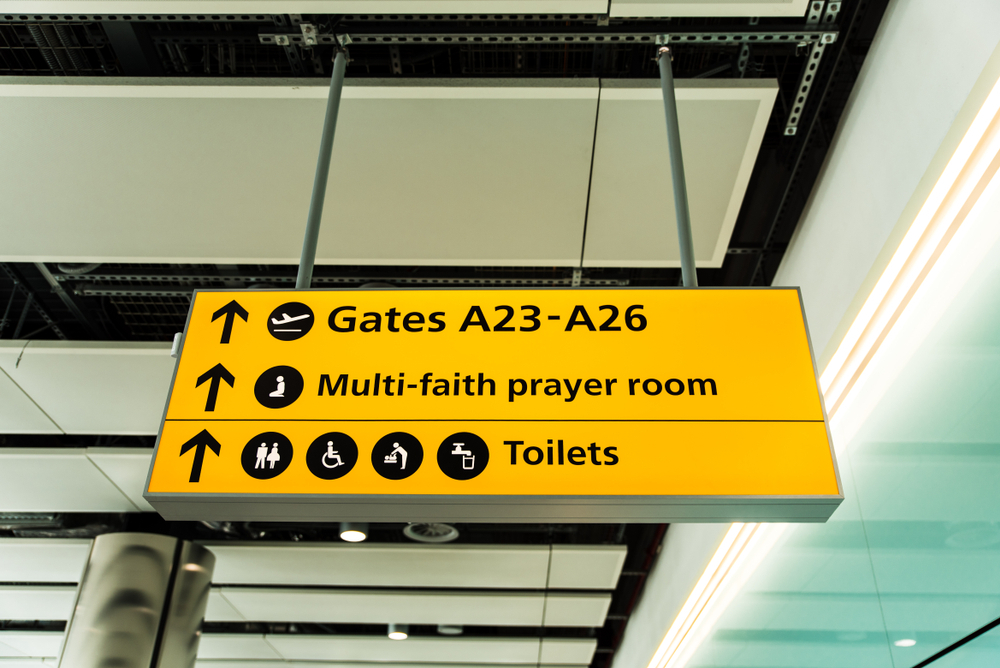Apps
Know the Best Plagiarism Detector

You need to know in depth what a plagiarism detector is and how these powerful tools work. Keep reading, and we’ll tell you everything you need to know about the best plagiarism detector and how to use it.
What is plagiarism?
In principle, you have to know what plagiarism is about, a term that has become very relevant in recent times.
Plagiarism is an act of taking the main ideas of the work of others and showing them as one’s own. Plagiarism is a crime from a legal point of view since it violates intellectual property rights or copyright in the case of artistic works.
In the university environment, we speak of ” academic plagiarism ” when someone else’s work is imitated and presented as one’s own and original. This act of “copying” is highly frowned upon by most academic institutions, which may even penalize the student if they consider it necessary.
Here lies the importance of this article and why you have to continue reading this post… When examining the final works of their students, all universities use a plagiarism detector. In this way, they can evaluate the percentage of coincidence with other people’s jobs and documents and determine if there was plagiarism.
Read on to find out more in-depth about how these tools work and their strengths and weaknesses.
How does a plagiarism detector work?
A plagiarism detector works similarly to how Google does when we put what we want to find in the search bar. In this case, Google searches its large database for everything corresponding to the word we placed in the bar.
A Plagiarism detector like https://skandy.co/how-to-check-powerpoint-plagiarism act in the same way: It searches for correspondences between the entered text and those documents present in their database. Also, it can sometimes recognize combinations of terms and paraphrased constructions.
For now, these are the situations in which, in general, a plagiarism detector is activated:
- Text match: The system searches through a large database until it finds an exact match with the entered phrase.
- Plagiarism by citation: Plagiarized citations from other documents are detected. It works the same way if the quote has been paraphrased and only the idea has been copied, so… Watch out!
- Bag of words: The plagiarism detector identifies when a work is rewritten by modifying some of its original words but keeping others within the same sentence. This plagiarism detection is more complex since it is possible to identify the match, even if the terms are in a different order.
- Stylometry: This technique identifies a person’s writing style and compares it with other texts. With it, there is usually a low detection rate. However, it is useful when identifying paraphrasing.
Free tools that will be useful to you
Now that you know how they work, you’ll want to start running your PowerPoints through a plagiarism checker before handing them to anyone! We have good news to give you: there is a free checker that you can find on the internet.
In any case, knowing which are the most effective free plagiarism detectors within the great offer is convenient. For this reason, we have found the best plagiarism detector for you: Skandy.co
Remember, however, that a plagiarism detector must be fast and accurate to record, at a suitable time, the occasions in which plagiarism has been committed. If, in addition, the control is carried out online, its speed must increase.
To carry out quick queries, most online plagiarism detectors allow you to control texts of up to 1000 words. Also, the accuracy of their free versions is not always the best.

Apps
How to Tell If Someone Logged into Your Snapchat

The article is about “how to tell if someone logged into your snapchat”. Snapchat has become one of the most popular social media platforms, allowing users to share photos, videos, and messages that disappear after a short time. With its widespread usage, it’s crucial to know if someone has logged into your Snapchat account without your permission. This article explores the signs that indicate unauthorized access and provides steps to verify and prevent such incidents.
Signs that Someone Logged into Your Snapchat
- Unusual Activity on Your Account: Notice any unfamiliar snaps sent or received, changes in friends or contacts, or posts made that you didn’t create.
- Messages Marked as Read: If you see messages marked as read that you haven’t opened, it could indicate someone else has accessed your account.
- Changes in Settings or Account Information: Check for modifications in your profile, privacy settings, or security settings that you didn’t make.
Steps to Verify if Someone Logged into Your Snapchat
- Check Recent Login Activity: Snapchat provides information about recent login sessions. Review this data to see if there are logins from unfamiliar devices or locations.
- Review Your Message History and Notifications: Look for any messages sent or received without your knowledge. Check notifications for login attempts or changes to your account.
- Change Your Password and Enable Two-Factor Authentication: If you suspect unauthorized access, change your password immediately. Enable two-factor authentication for added security.
Preventing Unauthorized Access to Your Snapchat
- Regularly Update Your Password: Change your password regularly and avoid using easily guessable passwords.
- Use Strong, Unique Passwords: Create strong passwords with a combination of letters, numbers, and symbols. Avoid using the same password for multiple accounts.
- Enable Two-Factor Authentication: Add an extra layer of security by requiring a verification code in addition to your password for logins.
- Be Cautious with Third-Party Apps and Links: Only use trusted apps and links related to Snapchat. Avoid clicking on suspicious links or granting unnecessary permissions.
Conclusion
Ensuring the security of your Snapchat account is essential in today’s digital age. By being aware of the signs of unauthorized access, taking proactive steps to verify and secure your account, and following best practices for online security, you can protect your privacy and enjoy a safer Snapchat experience.
FAQs
Can someone log into my Snapchat without me knowing?
- It’s possible if they have access to your login credentials or if your account security is compromised. Regularly check for signs of unauthorized access.
What should I do if I suspect someone has logged into my Snapchat?
- Change your password immediately, review your account activity, enable two-factor authentication, and report any suspicious activity to Snapchat support.
Does Snapchat notify you when someone logs into your account from a new device?
- Yes, Snapchat sends notifications for new logins. If you receive such a notification and haven’t logged in from a new device, take immediate action to secure your account.
Can I track who logged into my Snapchat account?
- Snapchat provides information about recent login activity, including device types and locations. Use this data to verify authorized logins.
What are some common mistakes that lead to unauthorized access to Snapchat accounts?
- Weak passwords, sharing login credentials, using unsecured Wi-Fi networks, and falling for phishing scams are common mistakes that can compromise Snapchat account security.
Apps
Unlocking the Power of Purple Message Bubbles on Instagram

Instagram’s “purple message bubble instagram” feature adds a touch of creativity and personalization to your direct messages. This article explores how to use and maximize the potential of the purple message bubble for enhanced communication and engagement on Instagram.
How to Send a Message with a Purple Bubble on Instagram
Sending a message with a purple bubble on Instagram is simple. Just follow these steps:
- Open Instagram and go to your Direct Messages.
- Select the contact you want to message.
- Type your message and tap on the “Aa” button to customize the text.
- Choose the purple color option for your message bubble.
- Send your message with the purple bubble effect.
Benefits of Using the Purple Message Bubble
The purple message bubble stands out among regular messages, grabbing attention and making your messages more visually appealing. It adds a personal touch to your conversations and can help express emotions or convey messages in a unique way.
Enhancing Communication with the Purple Message Bubble
The purple message bubble can be used creatively to engage with friends, followers, or customers on Instagram. Whether sharing updates, expressing gratitude, or promoting content, the purple bubble adds flair to your communication style.
Customizing the Purple Message Bubble
Instagram offers various customization options for the purple message bubble, including different text styles, fonts, and effects. Experiment with these features to create eye-catching and memorable messages that reflect your personality or brand identity.
Purple Message Bubble Etiquette on Instagram
While the message bubble is fun and attention-grabbing, it’s essential to use it responsibly and respectfully. Avoid overusing the purple bubble effect and ensure that your messages remain clear, concise, and relevant to maintain a positive user experience.
Responding to Messages with a Purple Bubble
When receiving messages with a purple bubble, acknowledge the sender’s effort and creativity. Respond promptly and engage in meaningful conversations to build rapport and strengthen relationships on Instagram.
Managing Privacy and Settings for the Purple Message Bubble
Instagram provides privacy settings to control who can message you and how messages are displayed. Review and adjust these settings to ensure a secure and personalized messaging experience with the purple bubble feature.
Troubleshooting Issues with the Purple Message Bubble
If you encounter any issues or glitches with the purple message bubble, try updating the Instagram app, clearing cache and cookies, or reaching out to Instagram’s support team for assistance.
Conclusion
In conclusion, the message bubble on Instagram adds a fun and engaging element to your direct messages, allowing you to express yourself creatively and connect with others in a memorable way. By mastering the use of the purple bubble feature, you can enhance communication, showcase your personality, and make your messages stand out on Instagram.
FAQs
Can I change the color of the message bubble after sending a message on Instagram?
- No, the color of the message bubble is selected before sending the message and cannot be changed once sent.
Are there other customization options besides color for Instagram message bubbles?
- Yes, Instagram offers various text styles, fonts, backgrounds, and effects for customizing message bubbles.
Can I use the purple message bubble in group chats ?
- Yes, you can apply the purple message bubble effect in group chats as well, adding a touch of creativity to group conversations.
Is the bubble available for all Instagram users?
- Yes, the purple message bubble feature is available to all users and can be accessed in the Direct Messages section.
Does the this message bubble affect message delivery or response times on Instagram?
- No, this message bubble is a cosmetic effect and does not impact message delivery or response times.
Apps
Can You See Who Views Your VSCO Profile? Exploring Privacy on VSCO

Can you see who views your vsco ? VSCO is a popular platform for creative expression, photography, and social networking. With its unique filters, editing tools, and community features, VSCO attracts users looking to showcase their artistic talents and connect with like-minded individuals.
Understanding the View Count Feature on VSCO
VSCO includes a view count feature that allows users to see the number of views their posts receive. This metric provides insights into the reach and engagement of a user’s content, helping them gauge the impact and popularity of their posts within the VSCO community.
Can You See Who Views Your VSCO Profile?
No, VSCO does not provide a feature that allows users to see who specifically views their profile or individual posts. The platform prioritizes privacy and user control, focusing on content creation and community interaction rather than revealing viewers’ identities.
Exploring Privacy Settings on VSCO
VSCO offers robust privacy settings that empower users to customize their experience and manage their visibility within the platform. Users can control who can view their posts, interact with their content, and send messages, ensuring a personalized and secure environment.
Managing Visibility and Interactions on VSCO
Users can adjust visibility settings for each post, choosing between public, followers-only, or private options. This flexibility allows users to share content with specific audiences while maintaining privacy and control over their online presence.
Tips for Enhancing Privacy and Security on VSCO
- Review and Update Privacy Settings Regularly:
- Periodically review and update your privacy settings to align with your preferences and comfort level.
- Be Mindful of Sharing Personal Information:
- Exercise caution when sharing personal information or sensitive content on VSCO to protect your privacy.
- Report Suspicious or Inappropriate Activity:
- Utilize VSCO’s reporting features to flag any suspicious or inappropriate behavior, ensuring a safe and positive community experience.
- Engage Responsibly with Others:
- Respect other users’ privacy and boundaries when interacting on VSCO, maintaining a friendly and supportive community atmosphere.
Utilizing VSCO for Creative Expression
Beyond privacy considerations, VSCO provides a platform for users to express themselves creatively through photography, art, and storytelling. Whether sharing moments from daily life or exploring new artistic styles, VSCO encourages self-expression and authenticity.
Conclusion
In conclusion, while VSCO offers a view count feature for posts, it does not allow users to see who specifically views their profile. This approach prioritizes privacy and user control, fostering a positive and secure environment for creative expression and community engagement on VSCO.
FAQs
Can I track who views my posts on VSCO?
- VSCO’s view count feature provides insights into post reach but does not reveal specific viewer identities.
Are my posts on VSCO private by default?
- By default, VSCO posts are visible to the public unless you adjust privacy settings to limit visibility.
Can I block or restrict certain users on VSCO?
- Yes, VSCO allows users to block or restrict other users, providing options for managing interactions and privacy.
Is VSCO a safe platform for sharing personal content?
- VSCO prioritizes user privacy and security, offering tools and guidelines to promote a safe and respectful community environment.
How can I report inappropriate content or behavior on VSCO?
- You can report inappropriate content or behavior on VSCO through the platform’s reporting features, ensuring a positive and enjoyable experience for all users.

 Others10 months ago
Others10 months agoDavid T Bolno: Why Giving Back To The Community Is So Crucial

 Travel10 months ago
Travel10 months agoPractical And Essential Car Interior Accessories To Add Comfort And Convenience To Your Drive

 Travel10 months ago
Travel10 months agoBusiness Visa for CANADA

 Business10 months ago
Business10 months agoTop Reasons Why you Need to Consider Outsourcing Real Estate Photo Editing

 Health10 months ago
Health10 months agoGarlic Is The Best Vegetable To Treat Heart Problems

 Business10 months ago
Business10 months agoDead And Co Setlist What They Played At The Gorge Amphitheatre

 Fashion10 months ago
Fashion10 months agoTips For Choosing The Right For Engagement Diamond Rings

 Tech10 months ago
Tech10 months agoThe Best Way to Never Get Lost: Buy Wayfinding Signs!